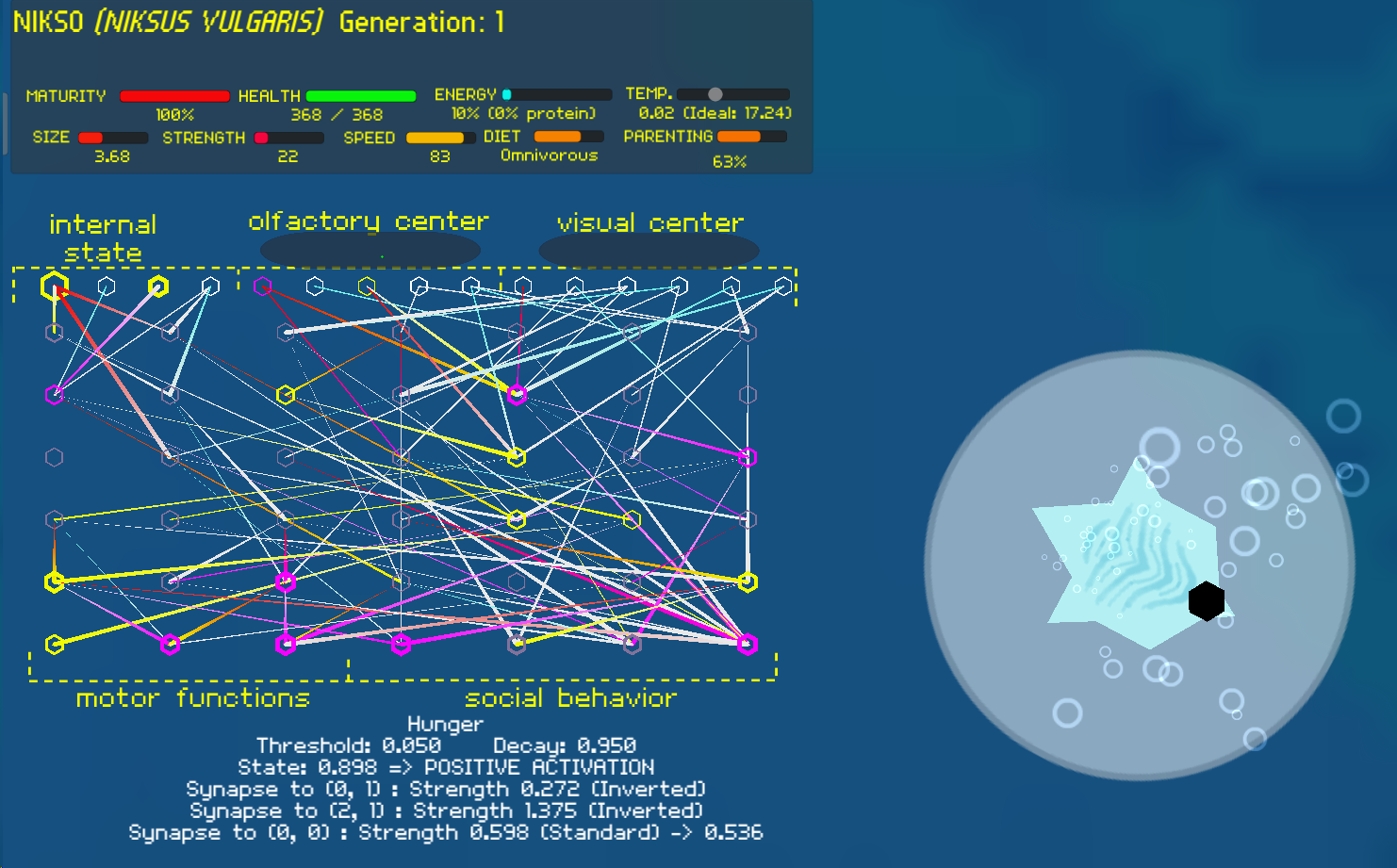Well, there's nothing simple about Critter brains, but I'll try and at least give you some pointers to help you out!
Here's a brand new random Critter and its brain. Brains are read from top to bottom. You can hover your mouse over each neuron to get a readout on it. Here my mouse is on the upper left neuron, the Hunger Input. When reading a Critter brain, here's a color code:
Yellow: ACTIVE (Positive)
Purple: ACTIVE (Negative)
White: Neutral
Synapses come in three Types: Standard (White), Absolute (Blue) and Inverted (Red.) Synapses have their Type color at the start and their Activation color at their end. So you can see that first Hunger Input Neuron in the upper left is Active, and has a Standard Synapse going straight down that's also Active, and two Inverted Synapses that are Inactive. (I'll explain what these Synapses are about later.)
All Critters have the same Inputs and Outputs (though the Decay Rates and Activation Thresholds for these may differ.) You can mouse across them to get the breakdown but briefly, Critters have inputs for Hunger, Pain, Maturity, Temperature, and then various inputs for Scent and Vision. They have Outputs for Forward/Backward movement, Turning Left and Right, Releasing Musk, Biting, trying to Reproduce, and Adrenaline (Rage if Negative, Sprint if Positive.)
The Neurons themselves have a unique build. Each one has a Threshold and a Decay Rate. Every tick, in typical neural network fashion, all of a Neuron's inputs are added together and fed in as the new value for the Neuron, but the Neuron's previous state plus or minus its Decay Rate (whatever gets it closer to 0) is added to those inputs as well. In this way, hidden neurons can possibly serve as a rudimentary "memory" -- high decay rate Input gets you what's happening now, a low decay neuron lower down taking a synapse from that input may tell you "This was happening recently."
If a neuron's State exceeds its Threshold (positive OR negative) then it feeds that value into its Synapses. If it's a Standard Synapse, the Neuron State gets passed down to the connected Neuron (multiplied by the Synapse strength, of course.) Absolute Synapses pass the absolute value of the activating Neuron's state: 0.5 and -0.5 both become 0.5. Inverted Synapses are funky -- they activate if the Neuron is INACTIVE and are neutral if the Neuron is Active. (So you can have a neural connection that's equivalent to "I don't smell blood" or whatever.)
Hope that helps; feel free to ask if you have any questions!

